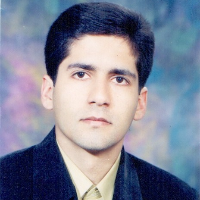Situational analysis as a method in in research on characteristics and components of Islamic city
Author(s):
Abstract:
Despite its simple appearance, the Islamic city is one of the most challenging concepts studied in scientific disciplines including architecture, urbanism and the history of art. Besides theories approving or rejecting this concept, much research has been devoted to the study of the nature of the Islamic city and similar concepts. The importance of this concept is due to the fact that the viewpoints presented about it have had a considerable role in any attempt for designing, planning, and organizing of cities based on Islamic culture in the contemporary period and the Islamic city has been considered as the key to the explanation of Islamic urbanism. Despite the consensus about the importance and urgency of planning and design coordinated with inhabitants principles, values and cultures, coherent methodologies missed. In this regard using qualitative methods combined with critical thoughts about their facilities and capabilities can provide activist methodological tools to expose and reenvision the characteristics of Islamic city and Islamic urbanism. Over past twenty years situational analysis had used in a range of fields including art and humanities. In this article, we describe possibilities for using situational analysis in Islamic urbanism and provide examples of situational mapping from a study focusing on characteristics and components of Islamic city. In this regard we used pertinent texts from Persian literature about Islamic city as data and mapped individual and collective elements/ actors, nonhuman actors and discursive constructions. Situational maps, social worlds/ arenas maps and positional maps illustrated. The results of the study have two main aspects. On one hand the results is about Islamic city. In this case, this study concludes that Islamic city concept in its current place as described and introduced mostly by western researchers cannot be useful for explaining the relationship between city and culture and Islamic values and consequently for the manifestation of Islamic urbanism in contemporary cities. On the other hand the results is about using situational analysis in Islamic urbanism. Because of its capabilities and features, situational analysis can shed some light in research about Islamic city and Islamic urbanism.
Keywords:
Language:
Persian
Published:
Journal of Studies On Iranian - Islamic City, Volume:7 Issue: 27, 2017
Pages:
17 to 28
magiran.com/p1745947
دانلود و مطالعه متن این مقاله با یکی از روشهای زیر امکان پذیر است:
اشتراک شخصی
با عضویت و پرداخت آنلاین حق اشتراک یکساله به مبلغ 1,390,000ريال میتوانید 70 عنوان مطلب دانلود کنید!
اشتراک سازمانی
به کتابخانه دانشگاه یا محل کار خود پیشنهاد کنید تا اشتراک سازمانی این پایگاه را برای دسترسی نامحدود همه کاربران به متن مطالب تهیه نمایند!
توجه!
- حق عضویت دریافتی صرف حمایت از نشریات عضو و نگهداری، تکمیل و توسعه مگیران میشود.
- پرداخت حق اشتراک و دانلود مقالات اجازه بازنشر آن در سایر رسانههای چاپی و دیجیتال را به کاربر نمیدهد.
دسترسی سراسری کاربران دانشگاه پیام نور!
اعضای هیئت علمی و دانشجویان دانشگاه پیام نور در سراسر کشور، در صورت ثبت نام با ایمیل دانشگاهی، تا پایان فروردین ماه 1403 به مقالات سایت دسترسی خواهند داشت!
In order to view content subscription is required
Personal subscription
Subscribe magiran.com for 70 € euros via PayPal and download 70 articles during a year.
Organization subscription
Please contact us to subscribe your university or library for unlimited access!


